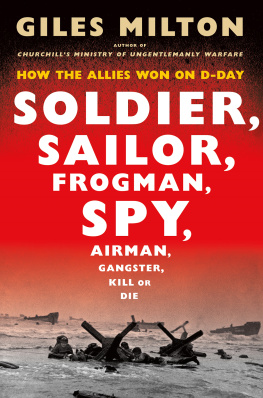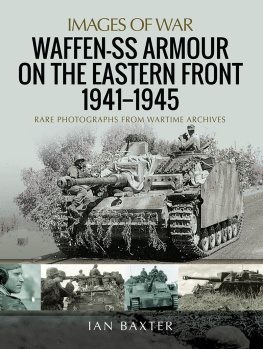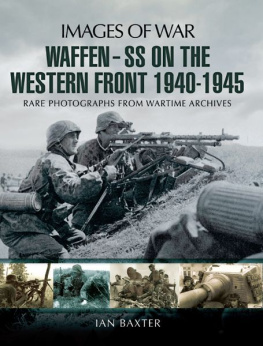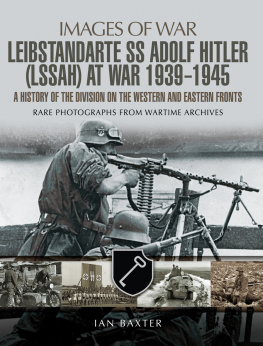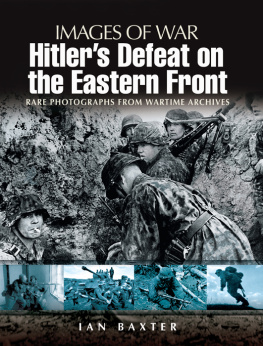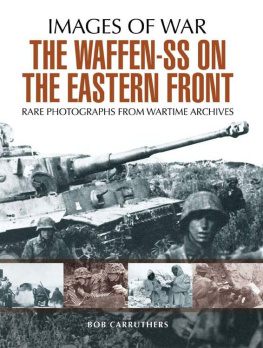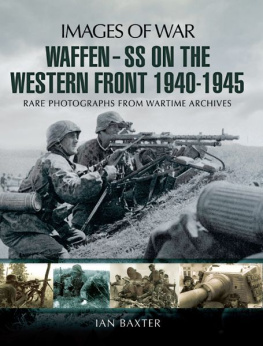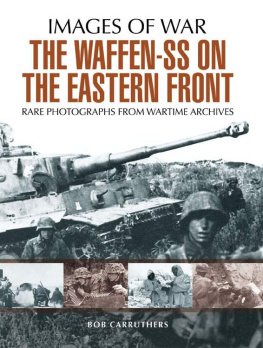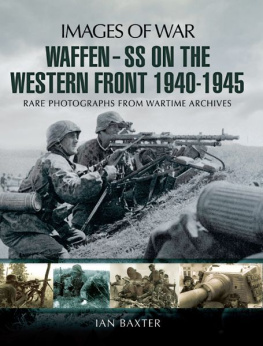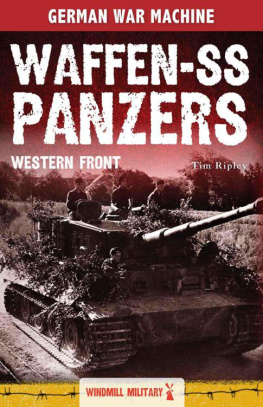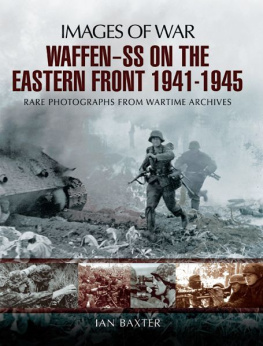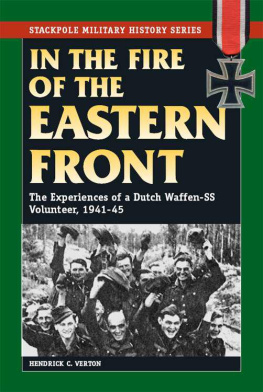

www.codabooks.com
This eBook edition is published in Great Britain in 2011 by
Coda Books Ltd, The Barn, Cutlers Farm Business Centre, Edstone, Wootton Wawen, Henley in Arden, Warwickshire, B95 6DJ
www.codahistory.com
Copyright 2011 by Coda Books Ltd
All rights reserved. No part of this publication may be reproduced or transmitted in any form or by any means, electronic or mechanical, including photocopy, recording, or any information storage and retrieval system, without permission in writing from the publisher.
A CIP catalogue record for this book is available from the British Library
ISBN: 978-1-908538-93-2
FOREWORD
The Waffen SS combat record in the East has given them a deserved place as an elite fighting force in the history of the Second World War. However, the reputation of the Waffen SS , the armed political wing of the Schutzstaffel or Nazi party, will always be tainted by the war crimes they committed in the East including the killing of what the Nazis termed untermenschen or sub humans Slavs, Jews and Marxists. How did a small force designed to protect Adolf Hitler which numbered just 120 men in 1933 turn into one of the largest, most feared and efficient military machines the world has ever seen?
The answer lies in a speech Hitler gave to Waffen SS troops just three weeks before the start of Operation Barbarossa, the Nazi code name for the attack on the Soviet Union. He said This is an ideological battle and a struggle of races. Here stands a world as we conceived it beautiful, decent, socially equal and full of culture; this is what our Germany is like. On the other side stands a population of 180,000,000, a mixture of races, whose very names are unpronounceable and whose physique is such that one can only shoot them down without mercy or compassion. When you fight over there in the east, you are carrying on the same struggle against the same sub-humanity, the same inferior races, that at one time appeared under the name of Huns, another time of Magyars, another time of Tartars, and still another time under the name of Genghis Khan and the Mongols. Today they appear as Russians under the political banner of Bolshevism.
When he launched operation Barbarossa Hitler ordered the Wehrmacht or German Army to conquer the Soviet Union and the Waffen SS to Nazisfy it. It was the biggest invasion in the history of human conflict. On one side were over three million well trained, equipped and battle hardened German troops including the Waffen SS and half a million of their Axis allies. In total the Germans had 153 divisions including 21 Panzer and 14 motorised divisions containing over 3400 tanks and 3000 aircraft. On the other side was a Soviet army of over five million men in 180 divisions with over 10,000 tanks and 20,000 aircraft. However, while on paper the Soviets seemed more than a match for the Germans, in reality their troops were badly organised and ill equipped and many of their tanks and aircraft were obsolete. Perhaps most importantly the Soviet army had lost many of its best commanders due to Stalins purges.
To the Wehrmacht Hitler ordered the job of kicking in the front door so the whole rotten Russian edifice will come tumbling down. To the Waffen SS fell not just the job of combat but also waging a race war to create Hitlers long cherished dream of lebensraum or living space for the German people in the East, a theory first mooted in his 1926 political testimony, Mein Kampf . Barbarossa was therefore always more than just a military campaign, it was a battle of ideologies between National Socialism and Communism to establish a new world order in Europe.
During operations in the East the Waffen SS grew from just six divisions comprising 160,000 men at the start of Barbarossa to a huge force of 38 combat divisions comprising over 950,000 men by the end of the war. With their distinctive uniforms, strict Germanic racial requirements and under the command of Heinrich Himmler, one of the post powerful men in the Third Reich , the Waffen SS earned a fearsome reputation for fighting. As a consequence they attracted only the most committed recruits who were willing to fight and die for the cause.

Heinrich Himmler, Reichsfhrer of the SS.
In the East Waffen SS divisions were placed under the operational control of the Oberkommando des Heeres or the Supreme High Command of the Army although in practice they often acted independently. While initially numerically insignificant when compared to the Wehrmacht or the Germany Army, the Waffen SS soon brought to Barbarossa an ideological fanaticism out of all proportion to their numbers.
For the over stretched German Army, with its history steeped in the old Imperial and Prussian traditions of solidarity and soldiering, indulging in any activities like racial cleansing which did not progress their war aims was regarded as a waste of resources. For the Waffen SS the regular army lacked the ideological zeal and fighting spirit to beat an opponent who would often rather die than be captured. The result was a severely strained relationship between the two who often disagreed on tactics at a time when they should have been combining forces to fight the Russians.
This sense of racial and military superiority, encouraged by Himmler through better pay, food and equipment, was central to the Waffen SS philosophy. It was combined with a fanatical loyalty to Hilter, best expressed in their motto Meine Ehre heisst Treue or My honour is loyalty. It meant that at the start of Barbarossa the divisions which comprised the Waffen SS , the Leibstandarte Adolf Hitler , Das Reich , Totenkopf , Polizei and Nord were all recruited from the toughest and most ideological ethnic Germans. The exception was the Wiking division which was recruited from Scandinavian, Finish, Estonian, Dutch and Belgian volunteers but served under German officers.
The Wehrmacht launched its surprise attack on Russia at 3.15 am on 22nd June 1941, bombing positions in Soviet occupied Poland. Attached to the three huge army groups were the six Waffen SS divisions. Army Group North advanced through the Baltic States and on to Leningrad, accompanied by Totenkopf , Polizei and Nord . Army Group Centre headed towards Moscow with the Das Reich . Leibstandarte and Wiking were with Army Group South and marched towards the Ukraine and Kiev.
During the first six months of Barbarossa the sheer scale of the Soviet rout in the East surprised even the German generals. On the opening day alone the Luftwaffe destroyed over 2000 Soviet aircraft, many on the ground and Army Group North penetrated over 50 miles into Russian territory. By the end of the first week Army Group Centre had captured Minsk and by the end of June they had advanced over 200 miles towards Moscow. By the end of September Army Group South had captured nearly half a million Soviet troops during the Battle of Kiev and Army Group North had lay siege to Leningrad. At the spearhead of all these successful advances in the East was the Waffen SS .
Yet just three months later the offensive ground to a shuddering halt on 1 December 1941 in temperatures of minus 40 Fahrenheit on the outskirts of Moscow. Five days later the Red Army counter attacked driving the Germans back 40 miles. During Operation Typhoon or the attack on Moscow Das Reich suffered big losses and of the 2000 soldiers who had started out with the regiment that June only 35 were left alive by the end of December. While the defeat was a crushing defeat for Germany, it was to prove the making of the Waffen SS .
Next page


